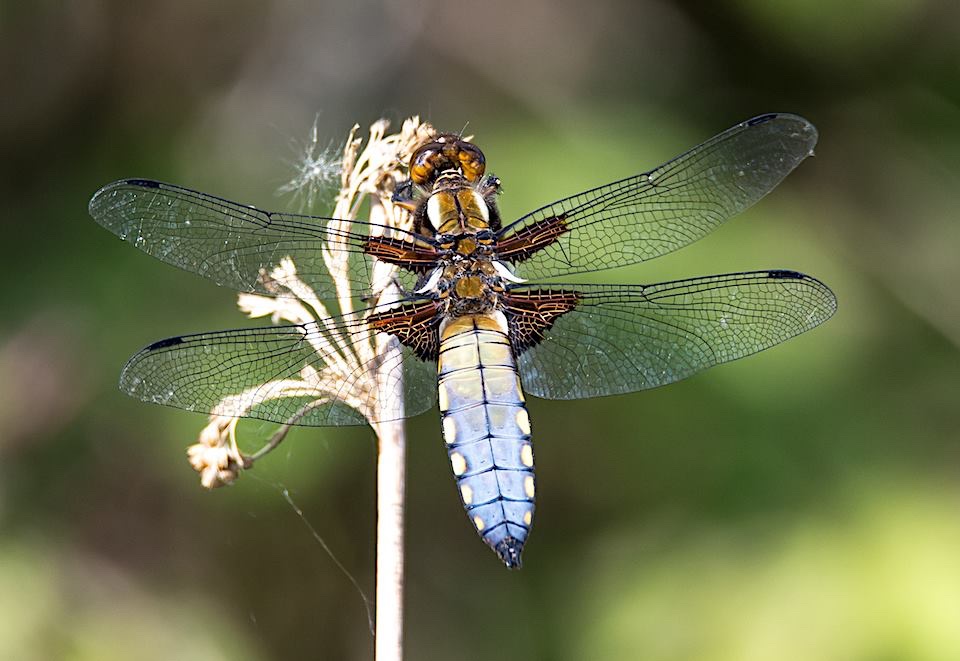Windmill Farm Nature Reserve is one of the best sites for dragonflies and damselflies on The Lizard, and perhaps in Cornwall. Find out more in this article, originally written as a blog post for our website by the reserve warden, Dougy Wright. Although originally written in August 2013, the article mentions species that can all be seen on the reserve in any year.
In the summer of 2013, the fantastic, sunny weather ensured a bonanza year for dragonflies and damselflies, with large numbers still on the wing into late summer at Windmill Farm. Over the years, 19 different species have been recorded on the reserve.
This year [2013] I have seen the following dragonfly species: Emperor, Common Hawker, Migrant Hawker, Southern Hawker, Golden-ringed Dragonfly, Four-spotted Chaser, Broad-bodied Chaser, Black-tailed Skimmer, Keeled Skimmer, Red-veined Darter, and Common Darter; and the following damselflies: Emerald, Beautiful Demoiselle, Large Red, Azure, Common Blue, and Blue-tailed.

The most notable species in this list is the Red-veined Darter – a national rarity. Red-veined Darters are common in southern Europe but not so in the UK. This species bred at Windmill Farm in both 2012 and 2013. There were good numbers around in June and July and I am expecting a new brood to emerge in late September [2013].
If you visit Windmill Farm in any late September you may see teneral (i.e. freshly emerged) Red-veined Darters – these usually emerge from the large pond on the reserve. The key distinguishing feature of this species is its blue eyes. If you look at an adult Red-veined Darter (above), in addition to the blue eyes you can also see red veins in the wings.
On the wing at the moment [August 2013] are masses of Common Darter, Emerald and Azure Damselflies. There are also good numbers of Golden-ringed (for which the best site is the big boardwalk) and Emperor (seen anywhere on the reserve) Dragonflies. If you are lucky, you may find Migrant Hawkers – these emerge from the large pond at the bottom of the first field on the reserve. Common Hawkers are also about (not common! – a male has established its territory [in 2013] on the second dragonfly pond). The big boardwalk (particularly bordering the heathland) is a good site for the Southern Hawker.
First published: August 2013
Author: Dougy Wright
Photos: Dougy Wright
